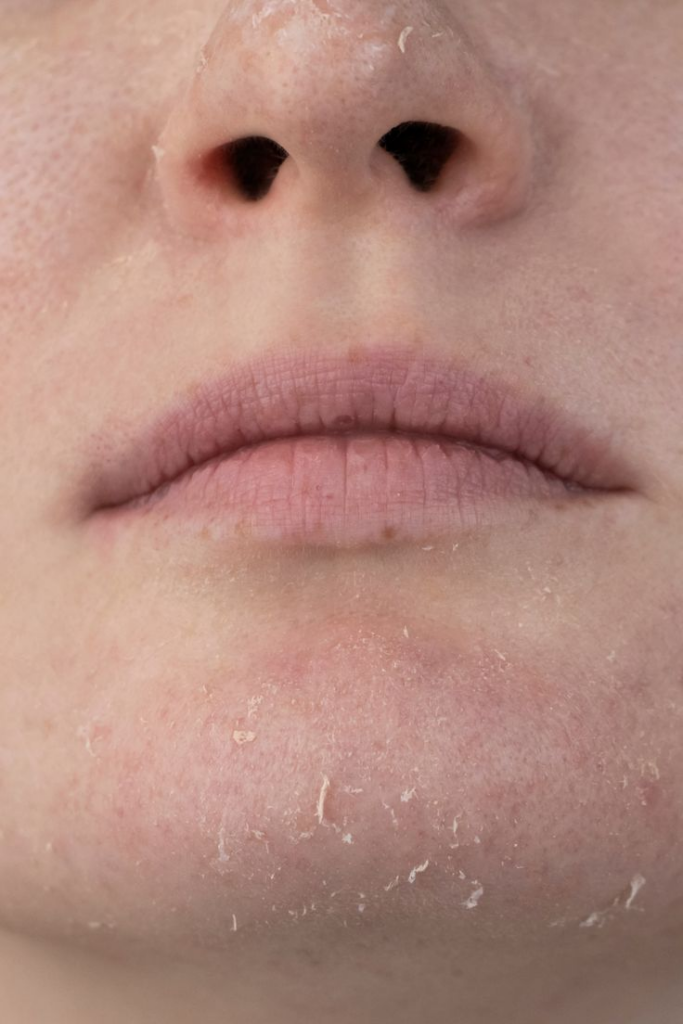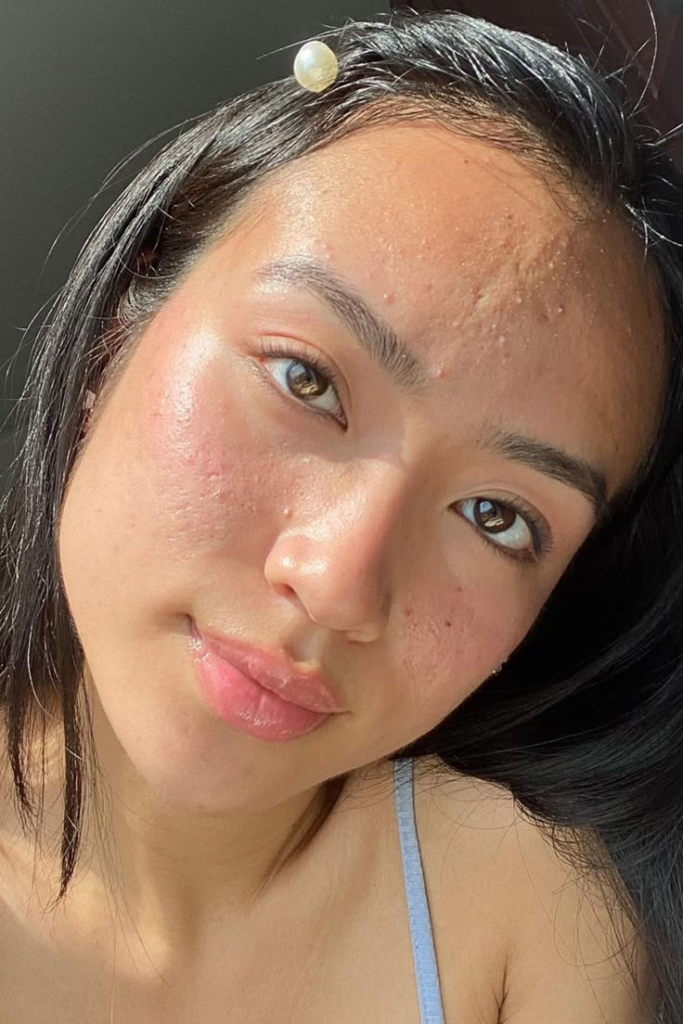Different Types of Skin
Everyone’s skin is unique, and understanding the different types of skin is key to creating a skincare routine that works best for you. The different types of skin include oily skin, dry skin, combination skin, acne prone skin, normal skin, dehydrated skin, sensitive skin.
Dry Skin Type

- Dryness often makes your skin feel tight in the morning.
- You may also notice rough or flakey patches forming on the surface.
- Dry areas can trigger itchiness and discomfort.
- These issues usually cause your skin to look dull overall
Best Skincare Routine and Hydration Tips for Dry Skin Relief
- Use warm water, not hot
- Apply moisturizer on damp skin
- Avoid harsh soaps or scrubs
- Use a humidifier if the air is dry
Combination Skin Type

- Typically, the skin is dry on the cheeks but oily in the T-zone (forehead, nose, and chin).
- Additionally, you’ll often notice enlarged pores, especially on the nose
- Depending on your skin type, it may be Dry-combination: dry on the cheeks, normal in other area Oily-combination: oily in the T-zone, but dry-to-normal on the cheeks
- Due to this imbalance, the skin often lacks consistent moisture across the face
Best Skincare Routine for Combination Skin – Tips for Balanced Hydration and Oil Control
- Use a gentle exfoliant 1–2x a week
- Don’t over-moisturize or over-dry
- Use blotting papers for oily areas during the day
Oily Skin Types

- To start, the skin often feels slick to the touch and has a noticeably shiny appearance.
- Additionally, it produces excess oil not just in the T-zone, but also on the cheeks.
- As a result, pores tend to appear enlarged.
- Over time, this can lead to clogged pores, blackheads, and acne breakouts
Oily Skin Care Tips – How to Control Shine and Prevent Breakouts
- Use blotting papers during the day
- Avoid touching your face
- Don’t skip moisturizer
Acne-Prone Skin Type

- Often, this skin type is prone to acne breakouts.
- In many cases, it’s combination to oily, and products can easily trigger acne flare-ups.
- Additionally, acne may be caused by skin sensitivity or hormonal imbalances
Best Skincare Routine for Acne-Prone Skin – Gentle, Non-Comedogenic Care Tip
- Use a non-comedogenic sunscreen during the day
- Don’t pick or touch your acne
- Keep your routine simple
Dehydrated Skin Type

1. Skin is visibly dry and may have rough or flakey spots but
produces excessive sebum
2. Often mistaken for oily skin due to oil production, in turn making
it worse by using drying products Should be treated as dry skin, despite oily appearance
Hydration Tips for Dehydrated Skin – Restore Moisture and Skin Balance
- Drink water throughout the day
- Use a humidifier if the air is dry
- Avoid harsh exfoliants or alcohol-based product
Sensitive Skin

- First and foremost, sensitive skin is more reactive than other skin types.
- Often, it may sting, burn, or turn red after using certain products.
- In many cases, even gentle ingredients can cause irritation or dryness.
- Additionally, sensitivity may be triggered by weather changes, fragrances, or harsh chemicals.
- As a result, this skin type requires calming, non-irritating skincare products
Best Skincare Tips for Sensitive Skin Types
- Avoid fragrance, alcohol, and scrubs
- Patch test new products
- Use lukewarm water (not hot)
- Don’t overdo it — keep it minimal and consistent
Normal Skin

- Unlike other skin types, this one has a naturally dewy appearance.
- Fortunately, it doesn’t usually present any major skin concerns
Essential Skincare Tips for Normal Skin Type
- Stay hydrated (water and diet matter).
- Don’t over-cleanse (can throw off your skin’s natural balance).
- Stick to a consistent routine — don’t change products too frequently.
- Avoid harsh scrubs or alcohol-based products.